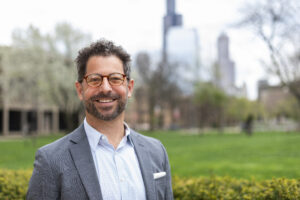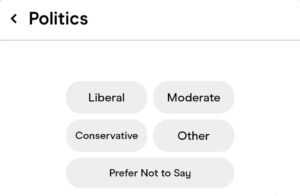Although places of worship might seem an unlikely location for health initiatives, public health officials are using them to reach out to Chicago’s minority communities. Last Sunday, 89 members of the South Side Salem Baptist Church received flu shots and more are scheduled for Dec. 16.
The approach is part of the Centers for Disease Control and Prevention (CDC) and the Chicago Department of Public Health‘s new focus on underserved African-American, Hispanic and Asian communities. The department partnered with Salem Baptist, which has a large number of African-American members, to provide flu shots and information on the vaccine.
During an influenza vaccine media briefing at Columbia College Chicago, Dr. Julie Morita, medical director of the city’s Department of Public Health Immunization Program, said minority groups are less likely to receive flu shots.
“There are some racial and ethnic disparities,” Morita said. For example, last year only 40 percent of African-American seniors received flu shots compared to 50 percent of all seniors in the city. Only 25 percent of African-American children ages 6 months to 2 years received the vaccination, she said, a lower statistic than the average 33 percent.
“We have a long way to go,” Morita said.
Morita spoke alongside Dr. Ray Strikas with the Department of Health and Human Services National Vaccine Program; Dr. Hugo Alvarez, deputy chief medical officer with Access Community Health Network; and L.J. Tan, director of Infectious Diseases, Immunology and Molecular Medicine of the American Medical Association.
“The flu shot is safe,” Morita said. “Many people believe the flu shot can cause the flu, but it does not.”
Anyone can get influenza, but some people can get much sicker than others. Tan said there is a misconception within the public on the severity of the flu.
“Influenza is the sixth leading cause of death for adults in the U.S.,” Tan said. “We’re not talking about a trivial thing here.”
On average, 226,000 people are hospitalized each year because of influenza and 36,000 die, mostly elderly individuals, Tan said. The vaccination helps prevent the spread of the virus to those at highest risk: seniors, young children, pregnant women and the chronically ill.
Alvarez said trust is a big part of the issue of why certain groups are underserved.
“We need to work on educating the public and include our efforts on getting the vaccine out there to these high risk populations,” Alvarez said.
In the Hispanic community, Alvarez said, families tend to live in the same households as very young children and seniors. Healthy adults, who are the least likely to be vaccinated, are, in fact, the best suited to prevent the spread of the flu. That is, if they get vaccinated, they are less likely to pass the strain on to their children or grandparents, Alvarez said.
“Using only faith-based organizations isn’t going to do it,” Alvarez said. “We need to identify others that are equally trusted.”
Alvarez suggested more flu shot clinics be located in establishments frequented by the public, such as supermarkets or salons.
“It’s about where people go on a regular basis,” he said. “People go to the doctor when they’re sick – they don’t always go when they’re not.”
Curtis Allen, CDC spokesman, said this is the fourth year for the influenza campaign. With a budget of $750,000, most of the funds have been put toward advertisements in magazines and radio stations geared toward African-Americans.
“It’s a cheap simple, safe, preventive health measure,” Allen said.
Tan said there is value in getting vaccinated for the flu. Flu shots are 70 to 90 percent effective in healthy adults. There is also an estimated savings of $60 to $4,000 in each illness averted.
There are also disparities in the Asian-American population, Tan said, which has a wide range of ethnicities within its population. Access is one issue, but it’s not the entire problem, he said.
The top reason people of color are less likely to get a flu shot, Tan said, is lack of awareness.
“These are people who say, ‘I don’t need the vaccination, I’m really strong.'” he said.
To get the word out, Tan said, community leaders need to get involved.
“We’ve done flu shots for the last couple years,” said Kenya Jackson, project manager of special events at Salem Baptist. “Not only do they do the flu shots, but the Department of Public Health provides information on other health concerns.
“It worked well for our church.”
More flu shots are available this year than ever before at 130 million doses nationwide, Strikas said. In Chicago, the Department of Public Health has 20,000 free vaccinations, which are being distributed at 100 sites throughout the city.
For a complete listing of city-sponsored immunization sites, visit egov.cityofchicago.org or call 311.
Categories:
Citywide Mind & Body Public
Tags:
cdc chicago department of public health flu shots flu shotscdc






Be First to Comment